Date: March 1976
Location: Barberton, Ohio
Source: Lewis Henderson, via Summit Memory
What do you see here?
Photo by Lewis Henderson
Date: March 1976
Location: Barberton, Ohio
Source: Lewis Henderson, via Summit Memory
What do you see here?
Photo by Lewis Henderson
For many muscle-car fans, there’s no finer example from Pontiac’s classic line-up than the 1969 GTO. The second-generation Gran Turismo Omologato (1968-1972) is on many folks’ wish lists for its legendary performance, good looks and timeless Pontiac styling.
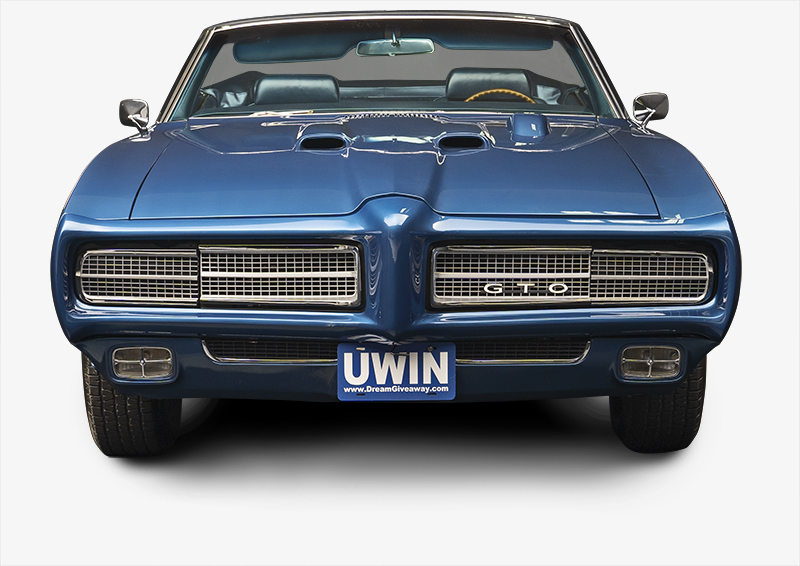
After coming off the win for Motor Trend’s Car of the Year in 1968, Pontiac’s stylists improved the GTO’s looks subtly for the 1969 model year. Aesthetic revisions included the deletion of the side vent windows, a mesh-look revamp to the front grille, red rear-quarter side-marker lights shaped like Pontiac arrowheads, and new front-parking-light, rear-taillight and rear-chrome-bumper designs. Inside, the gauges changed from blue to black.
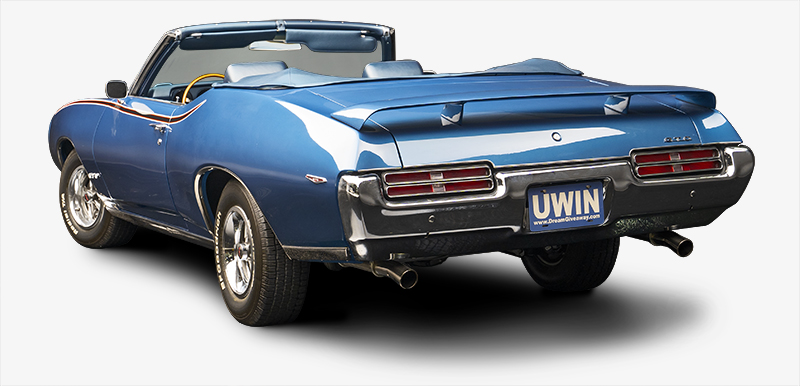
Despite the ooh la la in the looks department, sales were down from the previous year’s tally of 87,684 GTOs sold.
Though it was a dip, Pontiac produced a total of 72,287 GTOs in 1969. Of those, 7,436 were convertibles. And of those, 249 were equipped with the 366hp Ram Air III V-8 engine and a four-speed manual transmission, but not with the Judge package.

So, when the Dream Giveaway Garage asked us if our readers’ hearts would go thumpity-thump over a Ram Air 1969 GTO convertible, well, you already know the answer.
Who wouldn’t want to win a Judge in sheep’s clothing?
As Pontiac’s flagship muscle car, all 1969 GTOs came with 400-cubed V-8s. Two optional, higher-performance mills were available by special order: a 366hp Ram Air III and a 370hp Ram Air IV.

A quick review of the invoice graciously provided by PHS confirms a Ram Air III under the hood. Continuing down the line, the two additional performance options most collectors ooh and aah over are present as well: a four-speed manual stick and a heavy-duty Safe-T-Track differential.
If putting this cool classic GTO convertible in your driveway sounds good to you, then click here and enter now.

The factory also installed a push-button radio, retractable headlamp covers, Rally II wheels, hood-mounted tachometer, console, power steering and ride-and-handling package. You’re spot on calling this a nicely optioned Ram Air GTO! Oh, restoration parts were provided by Ames Performance.
Let’s get back to the details of how you can win this GTO.
Make a donation of $25 or more to help out charity and, if you’re lucky, you could find this primo example of America’s original super-car staring back at you from its new permanent home in your garage. Click here and enter now.
Entry banks close at midnight on January 30, 2023. Click here to get double tickets on your donation of $25 or more. The winner will be drawn on February 9, 2023, and the awarding of the keys, the title and the GTO will occur in late February or early March of this year. Plus, there’s $15,000 set aside to pay the federal government the prize tax on behalf of the winner. This is your last chance to win this rare Pontiac GTO. Enter now
Featured on AutoHunter, the online auction platform driven by ClassicCars.com, is a 1973 Chevrolet Camaro Z28.
This Camaro Z28 is finished in Midnight Blue (code 29) complemented by a white D88 hood and rear deck sport stripes, Z28 emblems, a front chin spoiler, and a three-piece rear spoiler.
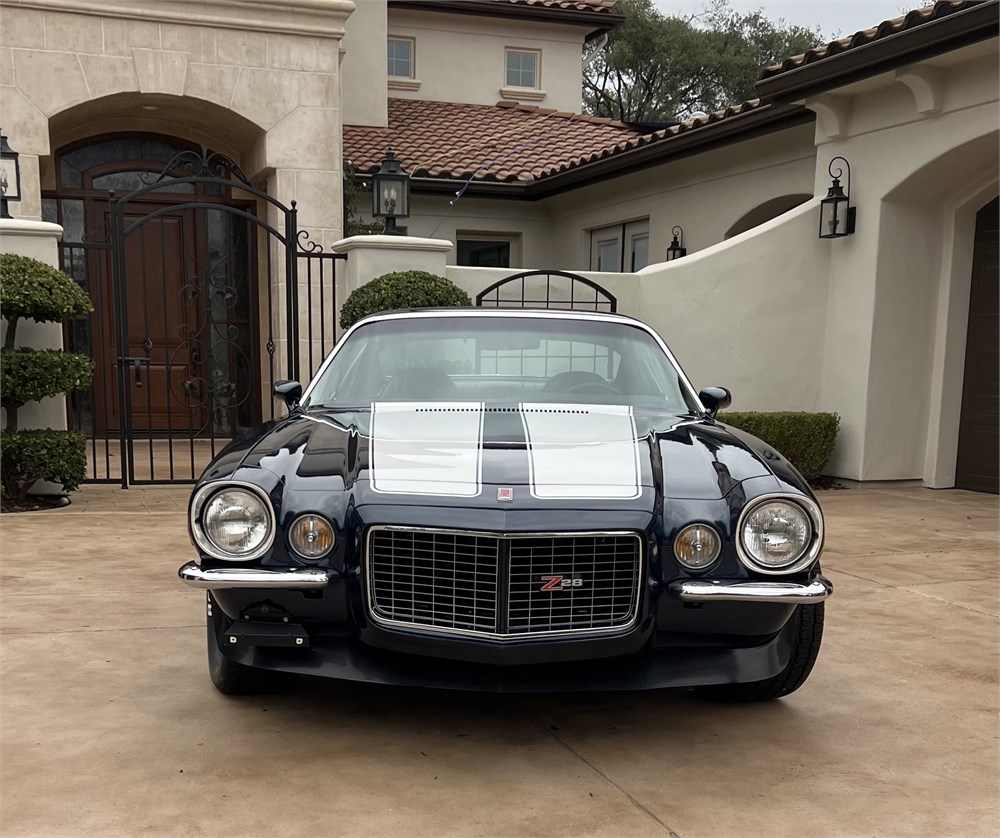
It rides on 15-inch gray Camaro Rally wheels with chrome center caps, stainless trim rings, and 245/60/R15 BFGoodrich Radial T/A tires.

“The front bucket seats, rear seat, and door panel inserts are upholstered in black vinyl” the listing states. “Features include power steering, power brakes, air conditioning, a center console with a storage compartment and a Hurst four-speed manual shifter, an AM/FM/Bluetooth Antique Automobile Radio, manual windows, and a four-spoke steering wheel. The seller states that the rear defroster blower does not work.”
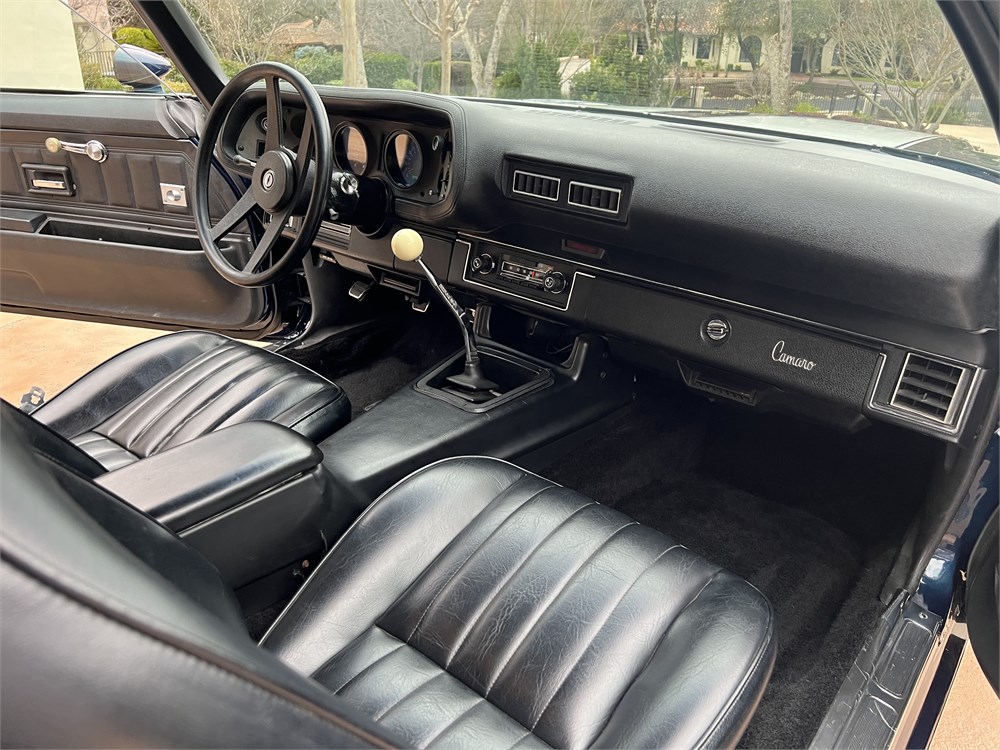
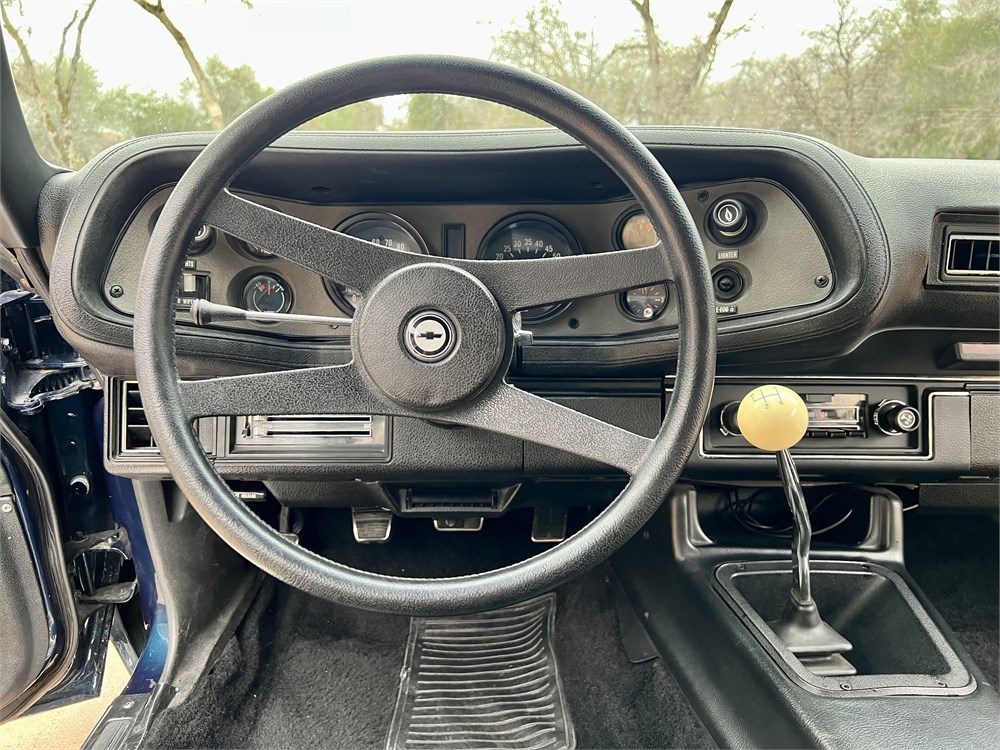
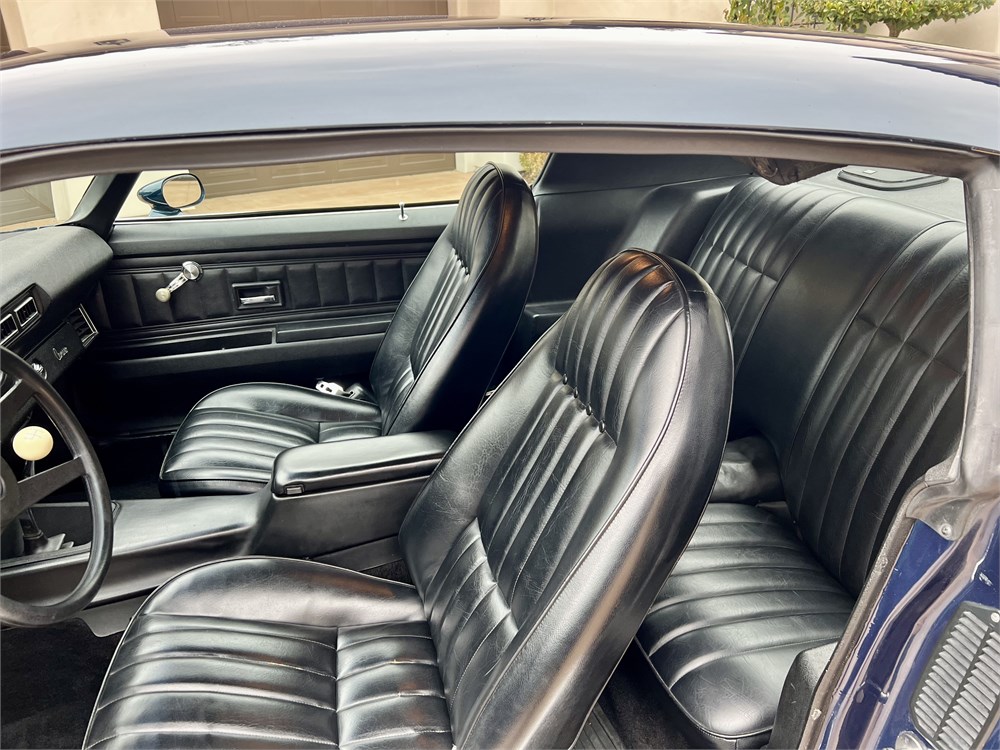
Under the hood is an 350ci V8 L82 engine featuring a new Demon carburetor, an aluminum Edelbrock intake, MSD ignition, and a K&N air filter. The engine is paired with a Muncie M20 four-speed manual transmission.
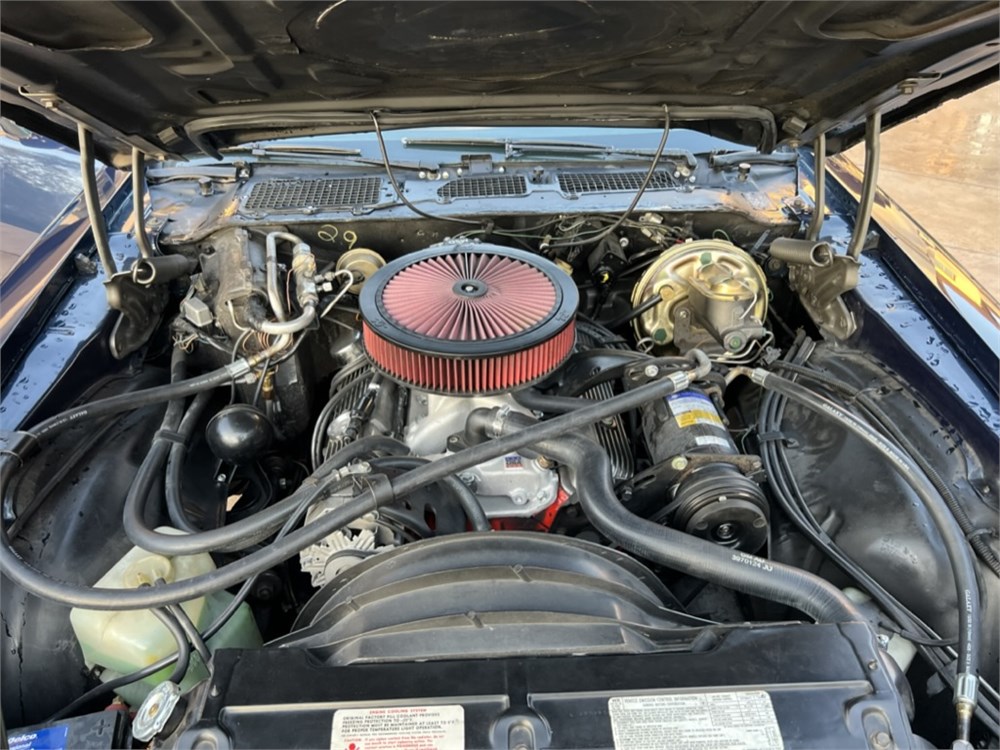
This Camaro has power front disc and rear drum brakes. The seller states that new leaf springs have been installed, and the air conditioning was recently serviced.
The odometer reads 13,375 miles, but the true mileage on this vehicle is unknown. The sale includes a clear California title in the seller’s name, receipts, and the removed air cleaner, carburetor, and manifold.
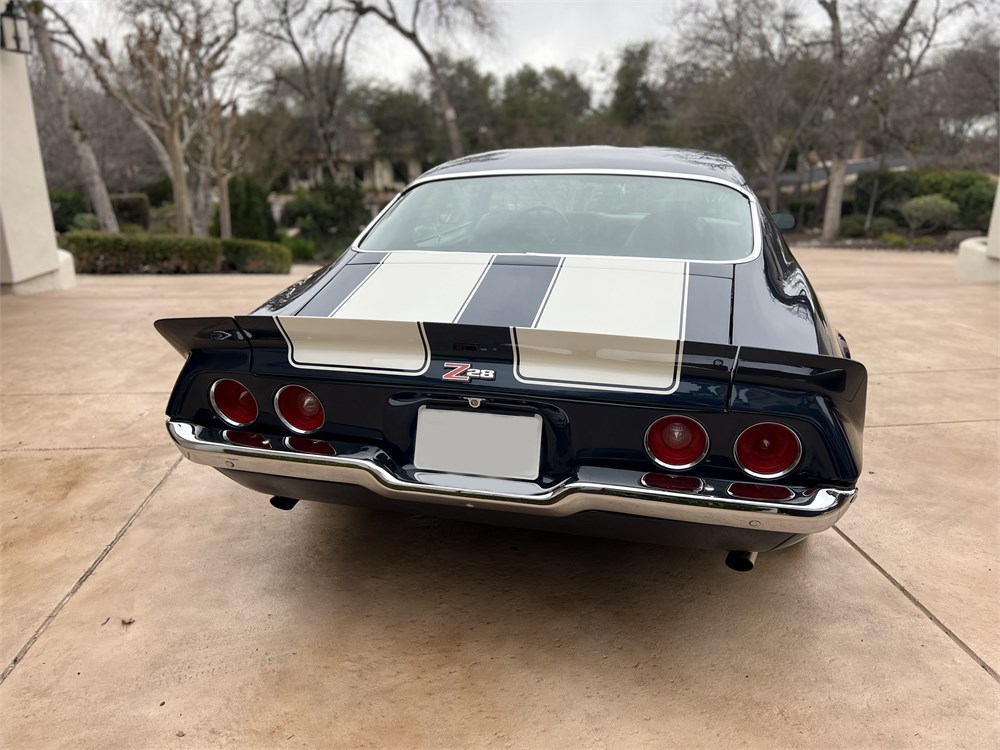
This 1973 Chevrolet Camaro Z28’s auction ends on January 20, 2023, at 4:20 p.m. (MST)
Visit the AutoHunter listing for more information and photo gallery
The Pick of the Day is a 1955 Imperial Newport two-door coupe — just don’t call it a Chrysler. From 1955 through 1975 (plus a 1981-83 revival), Imperial was a separate brand of the Chrysler Corporation, competing with Cadillac, Lincoln and Packard as America’s finest motorcar. This particular vehicle is listed for sale on ClassicCars.com by a dealership in Illinois.
When Virgil Exner introduced Chrysler Corporation’s Forward Look in 1955, it injected much-needed excitement into a company that was lagging in style compared to its cross-town competitors in Detroit. Imperial in particular was a crowning achievement of sorts, preening with added distinction compared to previous years, which often came off as an upscale Chrysler.
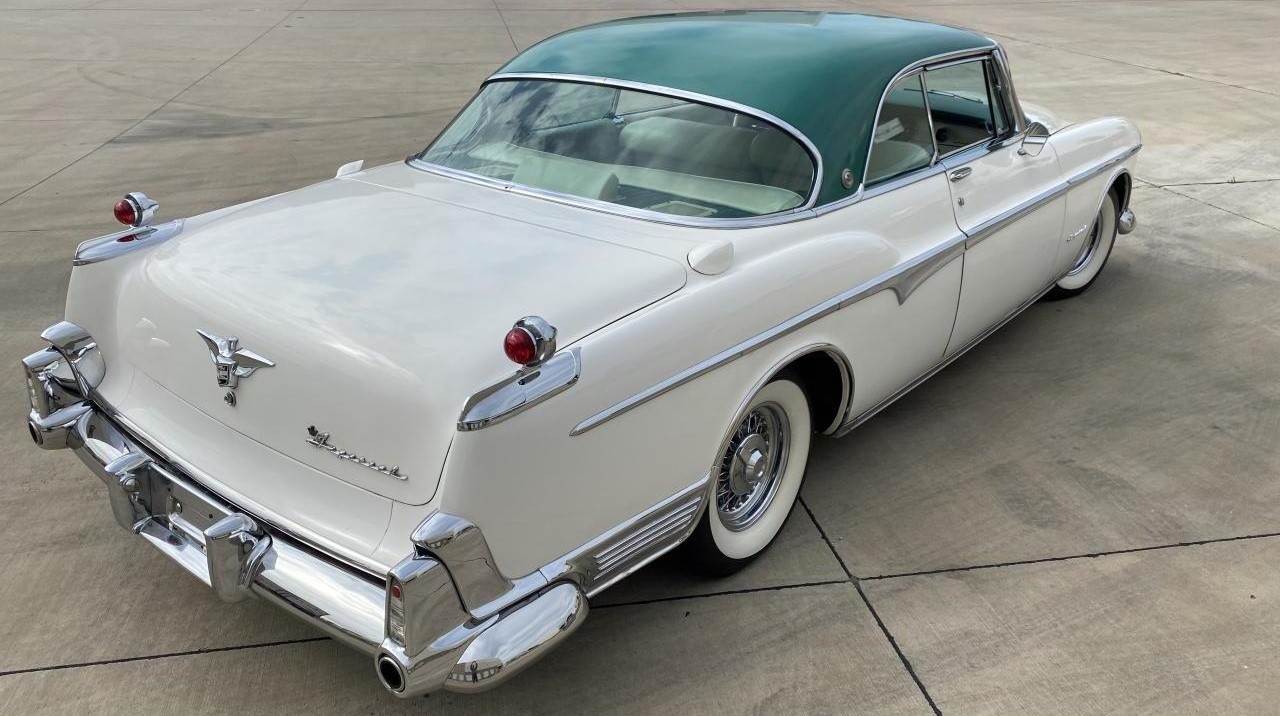
For the first time in years, Imperial was on equal footing with Cadillac, even though Cadillac was at its style peak during this era. Thanks to “100-million-dollar look” styling, including a wide egg crate grille (which the Chrysler C-300 “borrowed”) and distinctive, show car-inspired gunsight taillights mounted on the rear fenders, Imperial declared its arrival in high style.
A four-door sedan and the two-door Newport hardtop coupe were the core Imperial models, with a Crown limo for those who wanted to make a splash at the social club. That paled compared to the breadth of Cadillac’s lineup, but its trump card was engineering — long a Chrysler Corporation competency. A 331ci FirePower Hemi V8 with 250 horsepower competed toe-to-toe with Cadillac save the Eldorado. Within a few years, Imperial would exceed Cadillac on just about every objective metric.
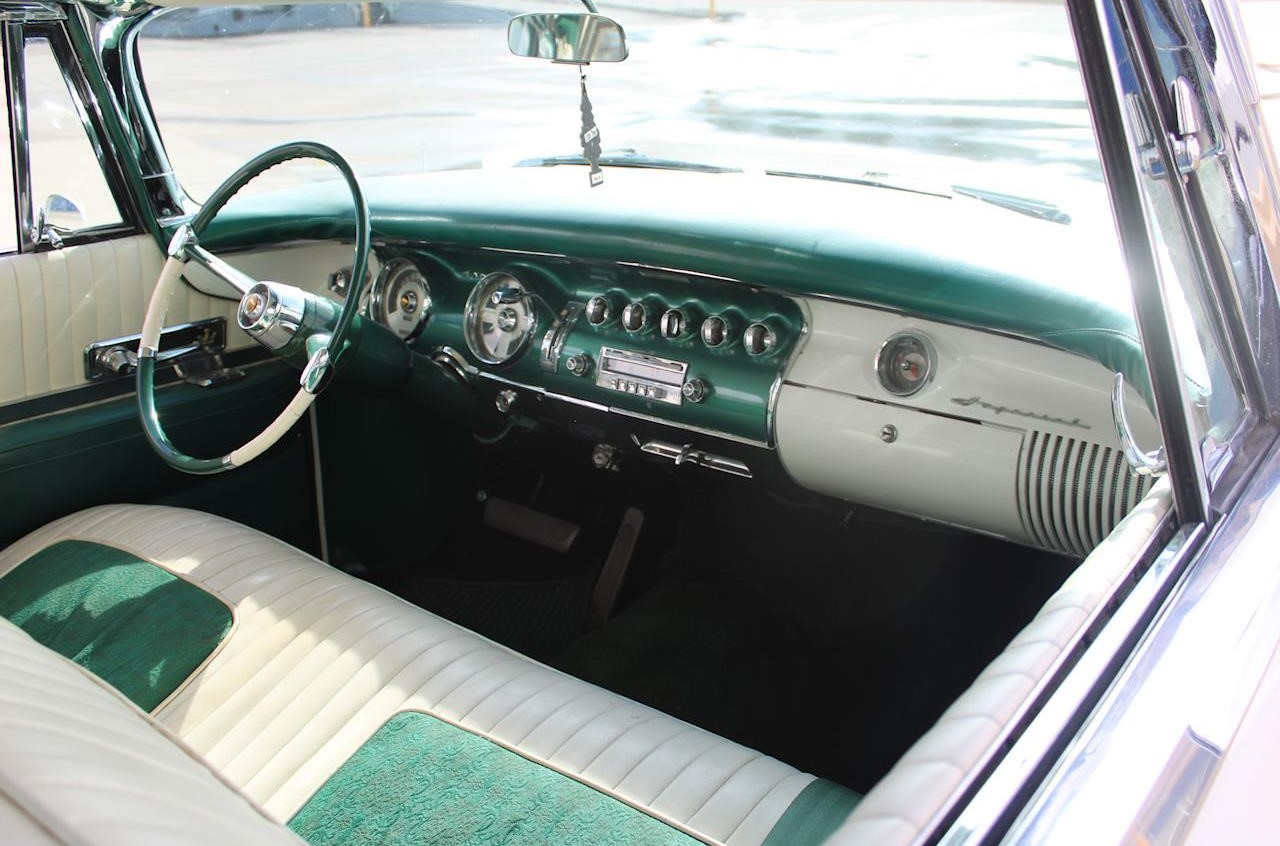
This Jade Green over Platinum 1955 Imperial Newport for sale on ClassicCars.com is one of 3,418 built and features a matching leather and cloth interior with power front bench. Aside from the standard power windows, desirable options include 15-inch chrome wire wheels with faux spinners and air conditioning, a pricey option that added more than 10% to the price of the car. Included with the Hemi V8 was PowerFlite automatic transmission with dash-mounted lever. The odometer reads 71,239, though the seller has not indicated whether those are the original miles.
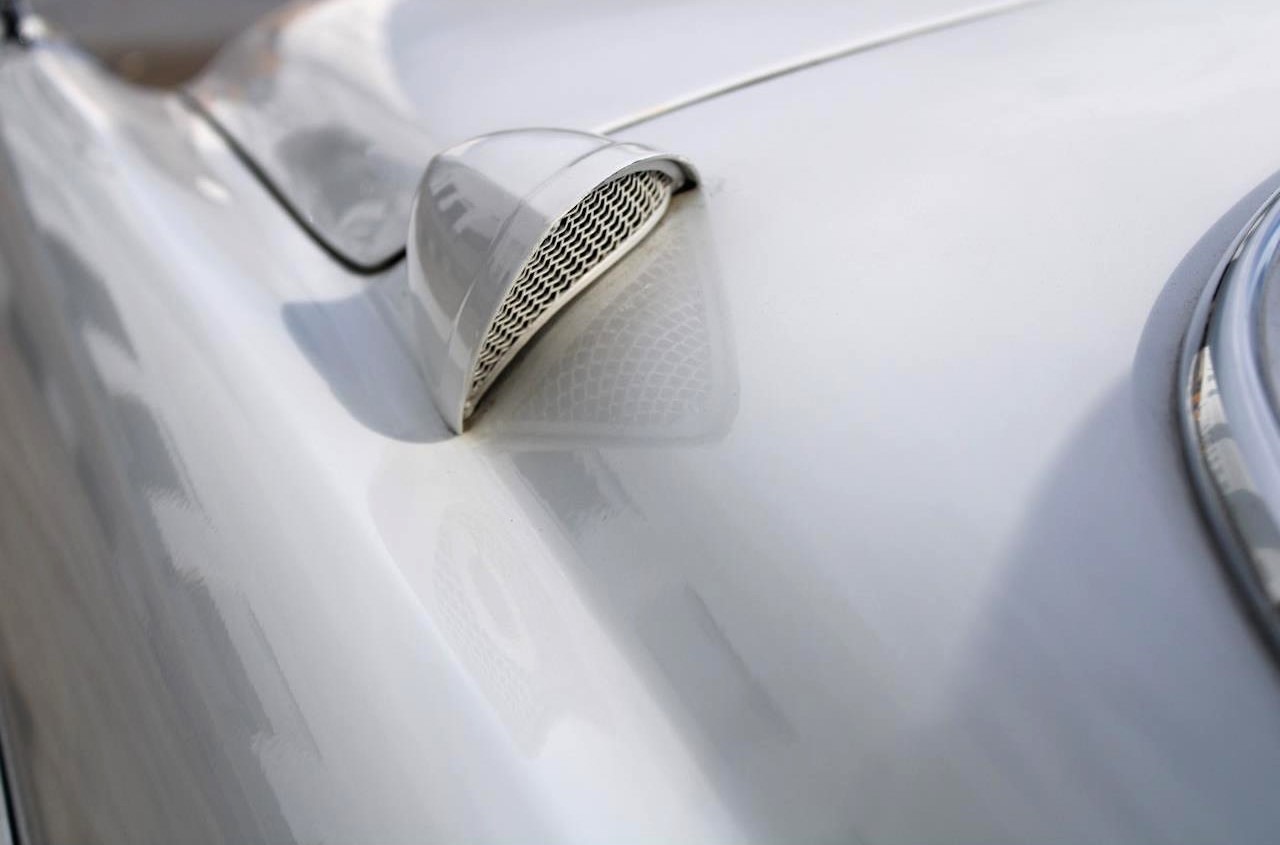
You may have noticed that 2023 has already brought some crazy prices at auction on TV, but that doesn’t mean every car is priced out of reach for the average collector. In the case of this 1955 Imperial Newport, it’s an attainable $27,000. It’s nice to see that sanity still exists in the collector car world.
To view this listing on ClassicCars.com, see Pick of the Day.
The last several months have seen a barrage of articles, in the automotive and mainstream media alike, pointing out that electric vehicles have become way too expensive for regular folks to afford. It’s a problem not just for us regular folks but also for the many initiatives to electrify the global automotive fleet. And despite recent musings from people like Toyota CEO Akio Toyoda about widespread conversion of older vehicles to electric power as a way to future-proof the cars we enthusiasts dig, converted classics can easily run into the six-figure range these days.
On the other hand, I’m on track to build my Chenowth EV for less than what a no-frills, 10-year-old, what’s-that-smell Camry costs.
Those of you following this project might have noticed a distinct lack of updates since last summer. A number of other projects have demanded much of my time since then, and money’s been tight lately, even for what I intended from the start to be a low-budget DIY project that anybody—even somebody who had a lot to learn about EVs like me—could put together. And when I say low-budget, I mean no-budget. It’s funded by couch cushion change and that five-dollar-bill I forgot in my pants pocket. I did get back to making progress on it recently—I’ll provide an update on that below—but first, let’s discuss what the project has cost me so far.
As with many of my car projects, I keep a spreadsheet of expenses, largely to keep myself honest when it comes to buying parts. It’s easy to just throw parts at a car while only looking forward to the next purchase, convincing yourself that it’s a low-budget project and that you really haven’t spent that much on it to date, but that’s also a quick path to getting in over your head on a project. So I set some ground rules with myself. One: No purchase that’s necessary to get the project on the road, down to the nuts and bolts and even registration costs, is too small or extraneous to record. Two: I don’t count tools, even ones I bought for a specific task on a specific project, but I do count supplies like shrink tubing and paint that I’ll certainly have leftovers of at the end of the project. Three: I subtract from the total any money I’ve made off the car from selling used parts to the loose change I find under the floormats.
In spite of my advice in the paragraph above, I bought much of what I needed for the Chenowth in 2021 well before I was ready to install it all. Brake lines, tires, shifter bushings, those sorts of things. I know I have a not-insignificant number of parts to get before I’m done—I still need to rebuild the beam, get a steering wheel, and install beefier transmission gears—but I’d say I’m 85 to 90 percent there. I’ll also include the disclaimer that I have not used my position at Hemmings to cadge any free or discounted parts or services from parts suppliers. There’s no inaccessible-to-the-common-man, secret-handshake, good-ol’-boys-club privilege at work here.
Grand total, so far: $9,980.26.
The biggest chunk of that total was the 2011 Nissan Leaf that I bought as a drivetrain and battery donor. It cost me $6,000 (plus the $85 to replace its flat tire, the $469 in registration and taxes to drive it around the block a few times, and the $150 I paid a local used car dealer to evacuate the air-conditioning system), but I also made sure it was a complete and running vehicle so I wouldn’t have to purchase any additional miscellaneous parts—the computers, the pedal assembly, the drive selector—that I would need to make that electric motor turn.
The Chenowth itself, which included front and rear suspension, a transaxle good for parts only, steering column, seized drum brakes, and little else, cost $1,000. I spent a little more than $700 on a disc brake conversion and other brake components and $530 on new tires. The aluminum disc and the custom coupler I used to mate the Leaf motor to the Volkswagen transaxle cost $330. So far I’ve put roughly $560 into steel and other supplies for the battery boxes.
Yeah, it adds up fast, and I probably didn’t need to spend the extra money for the disc brake conversion kit, but I’ve also trimmed costs in plenty of other ways to make up for that added expense. To start with, the state of Vermont offers a rebate program for the purchase of used electric vehicles; in my case, that was worth $750 (registering the Leaf, as noted above, was necessary to get the rebate). Spare VW parts are plentiful if you know who to ask, and Jim Howe, a former Hemmings columnist, gave me a good number of spare parts hanging around his shop, including a rebuildable transaxle, some wide five wheels, and a spare front beam. Instead of spending four figures on some racing seats that probably wouldn’t fit in the Chenowth’s tight cockpit anyway, I recently scored a free set of seats that fit perfect from somebody local doing a hashtag vanlife conversion on an old airport bus. And rather than skin the battery boxes in expensive new sheetmetal, I’ve stockpiled some metal filing cabinets either found free by the side of the road or bought for dirt cheap out of local classifieds.
In fact, that grand total above may shrink in the near future as I sell off the original one-year-only 1968 VW axle shafts and some parts from the donor Leaf that I thought I needed but upon further review don’t.
Also, despite those promises I made to myself that I’d be open to more help from others, this has largely been a DIY project, and I’ve neither kept track of the time I’ve spent on it nor calculated what that labor would cost.
Of course, this is not a path for everybody to follow. The Chenowth won’t be a flashy restomod EV with quilted leather seats and fancy aftermarket gauges. It’s not the best real-world example of an EV conversion, given that it’ll be a three-season runabout rather than an everyday daily driver. Range will be limited due to the fact that the batteries are more than 10 years old and not in an ideal state of health. I’ve been at it for two and a half years, and it’s nowhere near running or driving.
Some of these are compromises made for the sake of penny-pinching while others are personal privation preferences, but they at least illustrate how it’s possible to go electric without spending the sort of money that carmakers and EV conversion companies are demanding.
I’ll also point out here that I started with little more than a bare chassis. Somebody converting a vehicle that needs little to no restoration could conceivably buy a newer Leaf donor car with better batteries and spend roughly the same as what I have.
As for the progress I’ve made in the last six months or so, it’s all been relegated to trying to finish off the battery boxes. When we last left our intrepid hero, he’d finished welding together the first of three boxes and started to fabricate its top. I don’t know if my welding has improved much since then (as the hillbillies around here say, “I welded, it helded”), but I’ve at least had plenty of practice welding together the box for the 20-module stack, integrating the box for the six-module stack into the box for the 22-module stack, and fabricating lids for the two larger boxes. To each of the larger boxes I’ve added a submersible breather vent, and I’ve started to figure out how to solid mount them to the Chenowth’s chassis. In the six-module box, I’ve also made room for the contactors as well as the battery monitoring system module.
It’s slow going at the moment, and I still have a ways to go before I finish the battery boxes. I need to research a bulkhead that allows the cables connecting the two larger battery boxes to pass through safely, I need to add a lid for the six-module box, I need to find a place for the master battery disconnect, I need to finalize mounts for the boxes, and I need to skin them. Once that’s all finished, I can then begin the arduous task of connecting the BMS leads before figuring out where the other necessary components, including the inverter, should be mounted so I can wire it all up.
Here’s the greatest of American muscle cars owned by a member of the greatest of American rock bands. Arguable? I’m a betting man, so allow me to make a case for the Beach Boys and this 1971 Hemi’Cuda recreation that will be for sale at no reserve at the upcoming 2023 Barrett-Jackson Scottsdale Collector Car Auction.
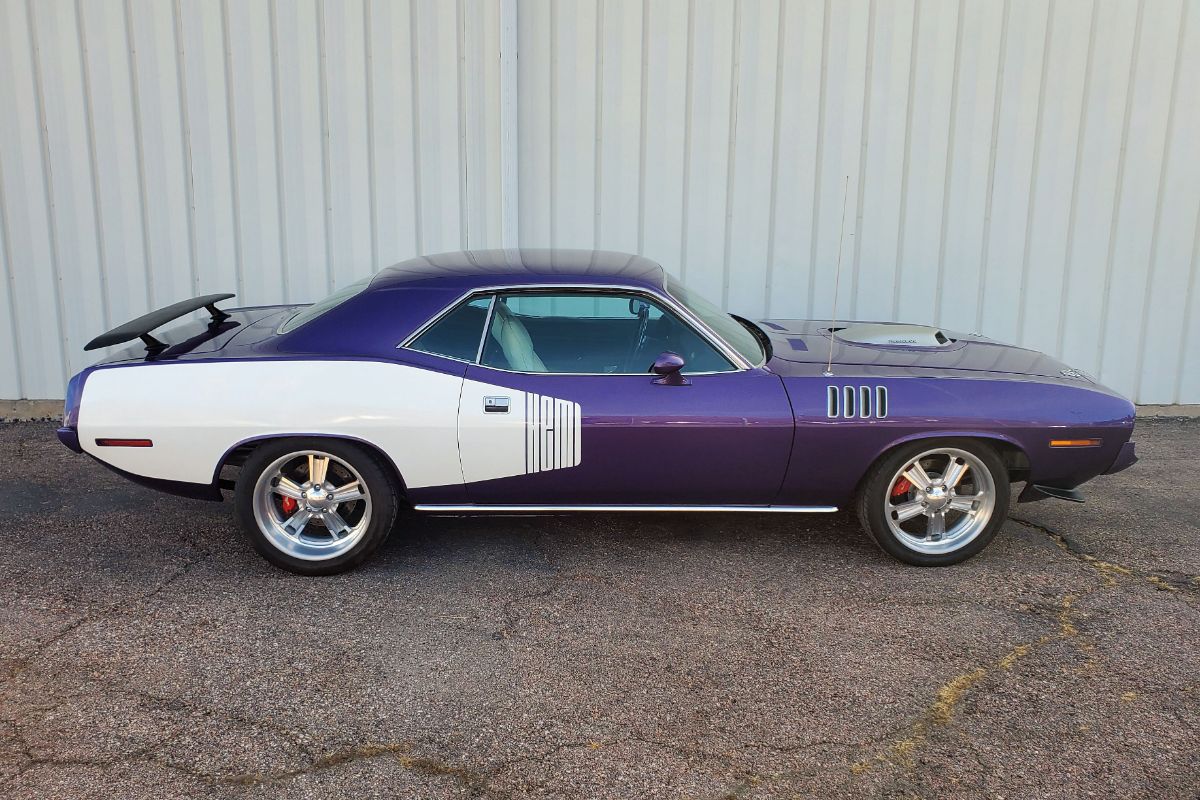
The 426 Hemi is the performance engine to which all other engines are compared. Starting in 1964, the Hemi won 1-2-3 at Daytona. It also made a name for itself in sanctioned drag racing. When the Street Hemi arrived for 1966, it brought its legendary prowess to Everywhere, USA, behaving more like a tamed race car than a hot sedan. Car and Driver magazine once said that the “Hemi … has more pure mechanical presence than any other American automobile.” Some folks claim the 440 Six Pack was faster, and it’s quite possible that, all things being equal, it’s consistently faster through the traps — blame the high-end nature of the Hemi’s power band for that — but beware the owner who knows how to tune and drive a Hemi. This engine in a ‘Cuda is arguably the most desirable muscle car from the era, especially the 1971 version with its long list of appearance options that wild it up.
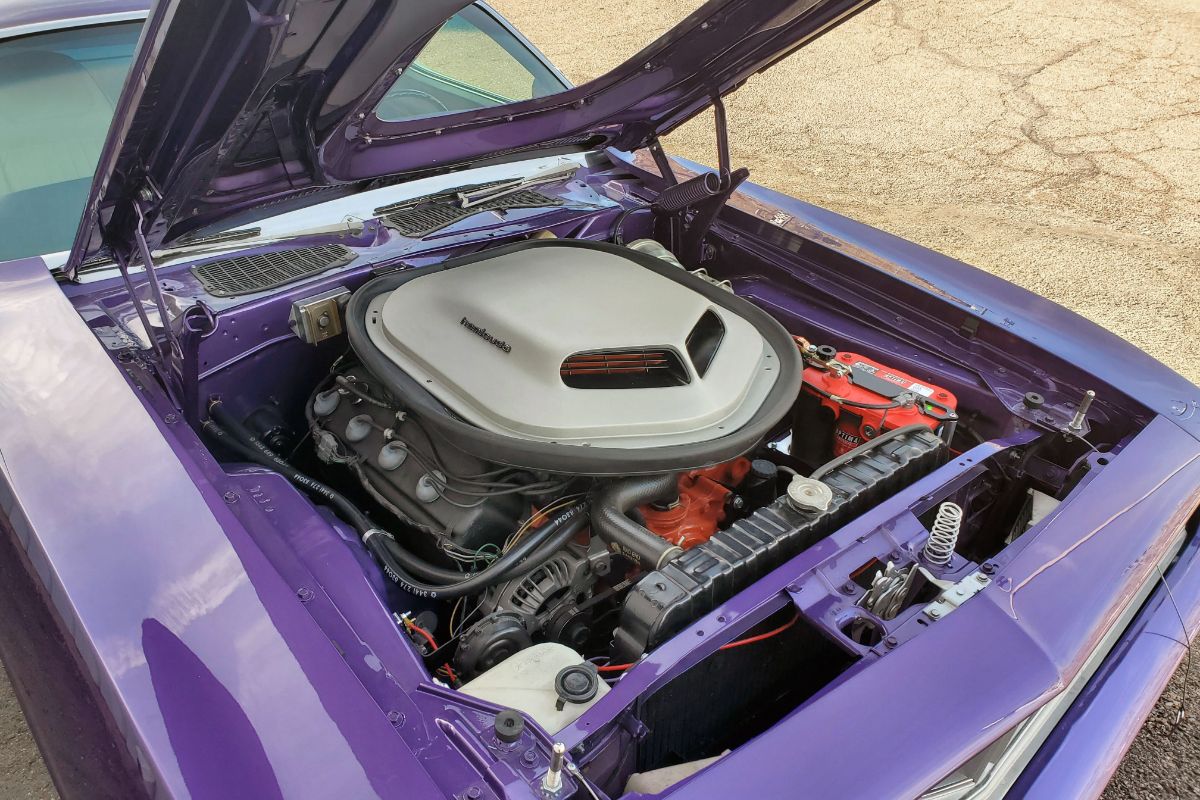
The Beach Boys may have started out as teeny-boppers, but they ended up as part of a triumvirate of 1960s music that included Bob Dylan and the Beatles. Brian Wilson quickly discovered that his bedroom was more interesting than a stage, so add some drugs, mental illness, and a musical escalation and you have a band that moved the goalposts and got everyone to make better music in its wake. Al Jardine, rhythm guitarist and vocalist for the Beach Boys since 1963 and member of the Rock and Roll Hall of Fame, can claim he was there through it all, thick and thin.

So we see no irony in the most desirable muscle car owned by a member of one of the most esteemed bands ever. Truth be told, Al’s ‘Cuda is a recreation of sorts, originally a ‘Cuda 340 from the factory. He commissioned the build in 2009 but eventually sold the car, with the new owner having the drivetrain refurbished by Lanier’s Speed Shop in Colorado. The rebuild included an Ohio Crankshaft rotating assembly with a 4340 forged stroker crank, Keith Black pistons, stainless valves, 1.57 roller rockers, cc-matched chambered cylinder heads and Schneider Racing camshaft, among other upgrades. Cubic inches now measure 477, with the Hemi having dyno’d at 494.3 horsepower and 570.7 ft-lb of torque.
That power is harnessed by the original 727 TorqueFlite automatic and 3.23 gears. Exhaust gases lead to dual 2.5-inch Flowmasters. Brakes have been upgraded to Wilwood Dynalite on all four corners, helping the ‘Cuda stop in a manner that would impress Consumer Reports magazine. Mags are custom-built 18-inch CNC-machined Budnick Wheels. All this is wrapped in “FC7” In Violet paint with white interior and matching “Billboard” decals, plus painted bumpers front and rear.

With less than 500 miles since the rebuild, this Hemi’Cuda is ready for someone to hop in and bruise some asphalt with “Good Vibrations” blasting through the cellphone (buying a factory-correct cassette player is up to you). A good match? If you agree with the case I’ve made, then you are a prime candidate for this 1971 Hemi’Cuda recreation, which is available with no reserve at the 2023 Barrett-Jackson Scottsdale Collector Car Auction on Friday, January 27, 2023.
If you love Mercedes-Benz then you’ll really appreciate this video.
Jonny Smith and his Late Brake Show is invited for a tour of a stunning private museum entirely populated by classic Mercedes. The man behind this beautiful obsession is Danny Lucas who, as you can imagine, is nothing short of Mercedes mad. Despite being called Lucas, he’s clearly more of a Bosch electrics man. This place is not a public museum, it is a completely private Car Cave that exists in plain sight behind blank roller shutter doors.
Danz Benz is the name of his collection, and Danny has channelled his adoration for classic Mercs and business of shop fitting to create a space like Jonny has never seen outside of Stuttgart. Open the door and we are greeted by resin floors, vivid spotlights and rows of curated cars from the 1960s to the 1990s. Actually, the earliest is 1880s, because Danny even has a functioning replica of the first car – the patented 1886 Carl Benz “vehicle powered by a gas engine”. Please see the chapters for each vehicle featured in this episode. This was a very special shoot, because Jonny was granted full access to the museum for the day. Danny’s enthusiasm for the cars he grew up seeing and aspiring to own bled through in every conversation. Each car in the museum was chased down and bought for its condition or backstory. Danny didn’t go down the predictable AMG path, instead he picked immaculate examples with odd specifications or back stories. He has Sir Stirling’s 1990 SL500, the founder of the Jubilee Clip’s S-class 450SEL, a 1970s SLC rally car that rekindled Merc’s racing division (more of which in a future episode), a line of early SLs and a mezzanine full of ’80s Mercs. This is how many of us dream of presenting our worshipped favourite machines, yet Danny ensures they are all on the button and road legal. He can even get any of them out within 20 minutes. The museum has glass cabinets with early MB artefacts and accessories. It felt like someone had bought the Stuttgart Mercedes museum and shipping it back to Kent. See this link for a tour https://www.danzbenz.com/collection
If you do not have the patience to watch the entire video here are the sections you can skip to, to hear about the specific cars featured:
CHAPTERS
0:00 Intro
1:19 the secret door
1:43 Supported by EBC Brakes
2:11 World’s first car – 1886 Benz
5:27 1975 450SLC rally car
7:00 W123 230TE Service mechanic car
9:07 Danny’s kiddie car SL
10:05 Concours SL Pagoda
12:04 R107 300SL
13:35 Stirling Moss’ 1990 R129 500 SL
15:59 Valtteri Bottas borrowed his car
17:03 How the museum was built
18:02 100kg giant Merc star hanging above!
18:48 W109 300 SEL 3.5 V8
20:38 W116 450 SEL V8
21:05 Owned by inventor of Jubilee clip!
23:55 All cars on the button
24:35 1980s upstairs area
25:21 US spec W126 turbo diesel
27:39 W126 560SEL
28:43 W126 380SEL base model
29:53 C126 560SEC
30:41 C124 230CE
31:44 Merc 500E
34:31 ‘Baby Benz’ & Bruno Sacco shrine
37:23 Outro chat
What a great video. We hoped you enjoyed it. What is your favourite Mercedes-Benz of all time?

The post A Secret Mercedes Museum. The Ultimate Benz Car Cave? appeared first on My Car Heaven.
Barrett-Jackson Collector Car Auctions will auction five charity vehicles during its 2023 Scottsdale Auction, January 21-29 at WestWorld of Scottsdale.
Each charity vehicle will cross the world-famous auction block with 100 percent of the hammer price going directly to its designated nonprofit organization. Helping raise over $149 million for charity to date, Barrett-Jackson is accustomed to auctioning VIN 001 vehicles to support charitable initiatives. The 2023 Scottsdale Auction will feature two of these highly collectible vehicles, including the 2024 GMC HUMMER EV SUV Edition 1 VIN 001 First Retail Production (Lot #3002) and the 2024 Ford Mustang GT Fastback VIN 001 (Lot #3004).
“Barrett-Jackson has helped raise more awareness and funds for charities across the county than any other collector car auction company,” said Craig Jackson, chairman and CEO of Barrett-Jackson. “We’re proud of the legacy we’ve earned as a company known for supporting organizations that help our military veterans, first responders, youth and those needing life-saving medical care. Together with our generous donors and bidders, we are improving the lives of countless Americans across the country.”
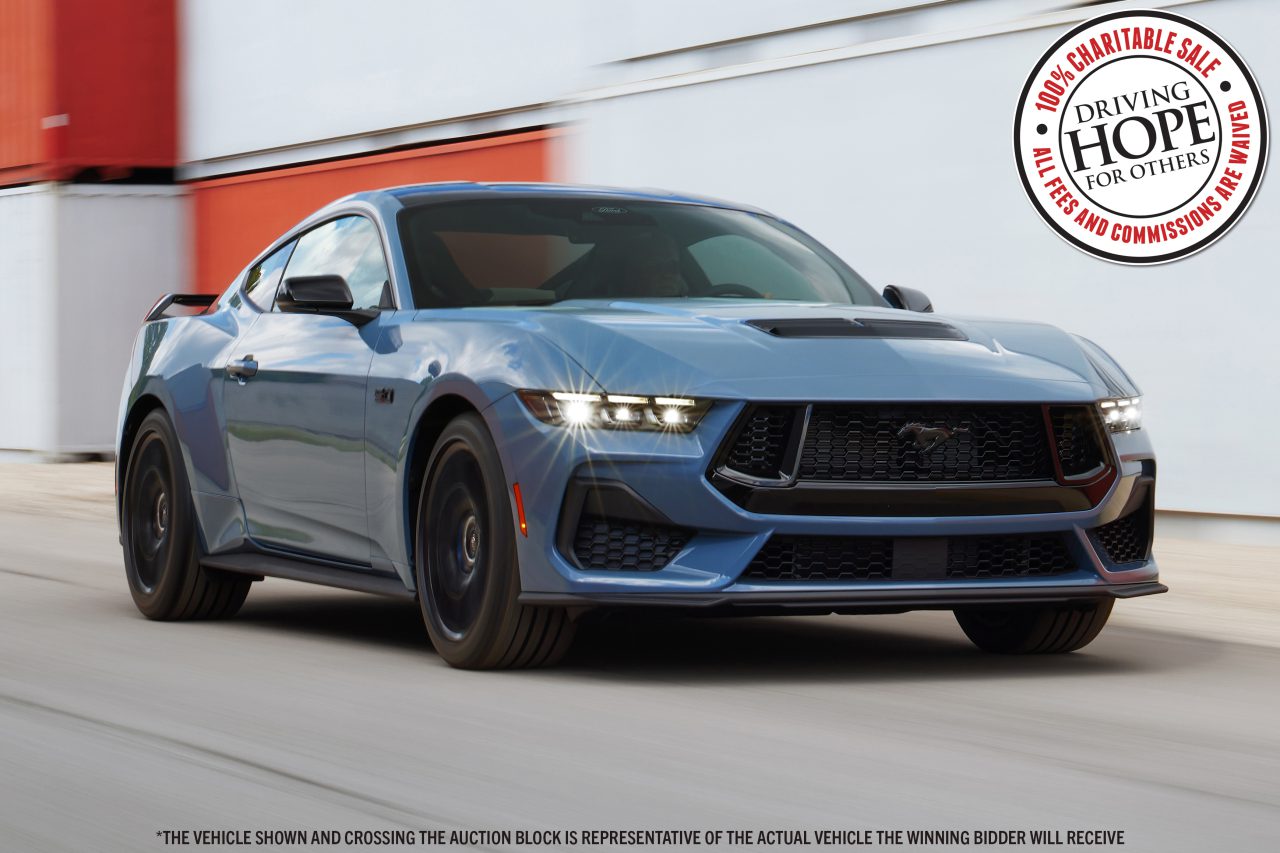
The 2024 GMC HUMMER EV SUV Edition 1 VIN 001 First Retail Production (Lot #3002) will be auctioned on Saturday, January 28, to benefit Tread Lightly!, a national initiative to protect and enhance recreation access and opportunities by promoting outdoor ethics to heighten individuals’ sense of good stewardship. The fully electric HUMMER EV SUV features a three-motor e4WD propulsion system with GM-estimated 830 horsepower and GM-estimated 11,500 ft/lbs of torque, 4-wheel steer with CrabWalk diagonal-drive functionality and Adaptive Air Suspension with available Extract Mode capability.
The 2024 Ford Mustang GT Fastback VIN 001 (Lot #3004) will be also auctioned on Saturday and 100 percent of its hammer price will benefit JDRF (Juvenile Diabetes Research Foundation), the leading global organization harnessing the power of research, advocacy, and community engagement to advance life-changing breakthroughs for type 1 diabetes (T1D).. The all-new Mustang GT’s fourth-generation Coyote V8 offers up to 486 horsepower, a fighter-jet-inspired cockpit and bold new styling. The winning bidder can choose any standard Ford Mustang GT fastback option, including color, transmission and interior packages.

General Colin L. Powell’s 2015 Chevrolet Corvette Stingray (Lot #3003) will be featured on Saturday as well, and will be sold to benefit America’s Promise Alliance, an organization dedicated to pioneering collective impact work, bringing together organizations and communities around the most important issues facing the next generation. General Powell’s son, Michael Powell, will be on the auction block to support the sale of this cherished vehicle. Owned and driven daily by the late General Powell, former Chairman of the Joint Chiefs of Staff and U.S. Secretary of State, the Corvette is powered by a 6.2-liter V8 engine hooked to an automatic transmission. It is finished in Gunmetal Gray with a black interior and leather seats and has only 15,600 actual miles.
“Many of our greatest auction moments over the last five decades have been the sale of charity vehicles on our world-famous auction block,” said Steve Davis, president of Barrett-Jackson. “We’ve shared celebrations and tears as our collector car family rallied around those in need. We’ll never fully grasp the extent of the countless lives saved and opportunities provided by the funds and awareness Barrett-Jackson has helped raise at our auctions, but it is an honor to continue to have the opportunity to impact the lives of those who need it the most.”
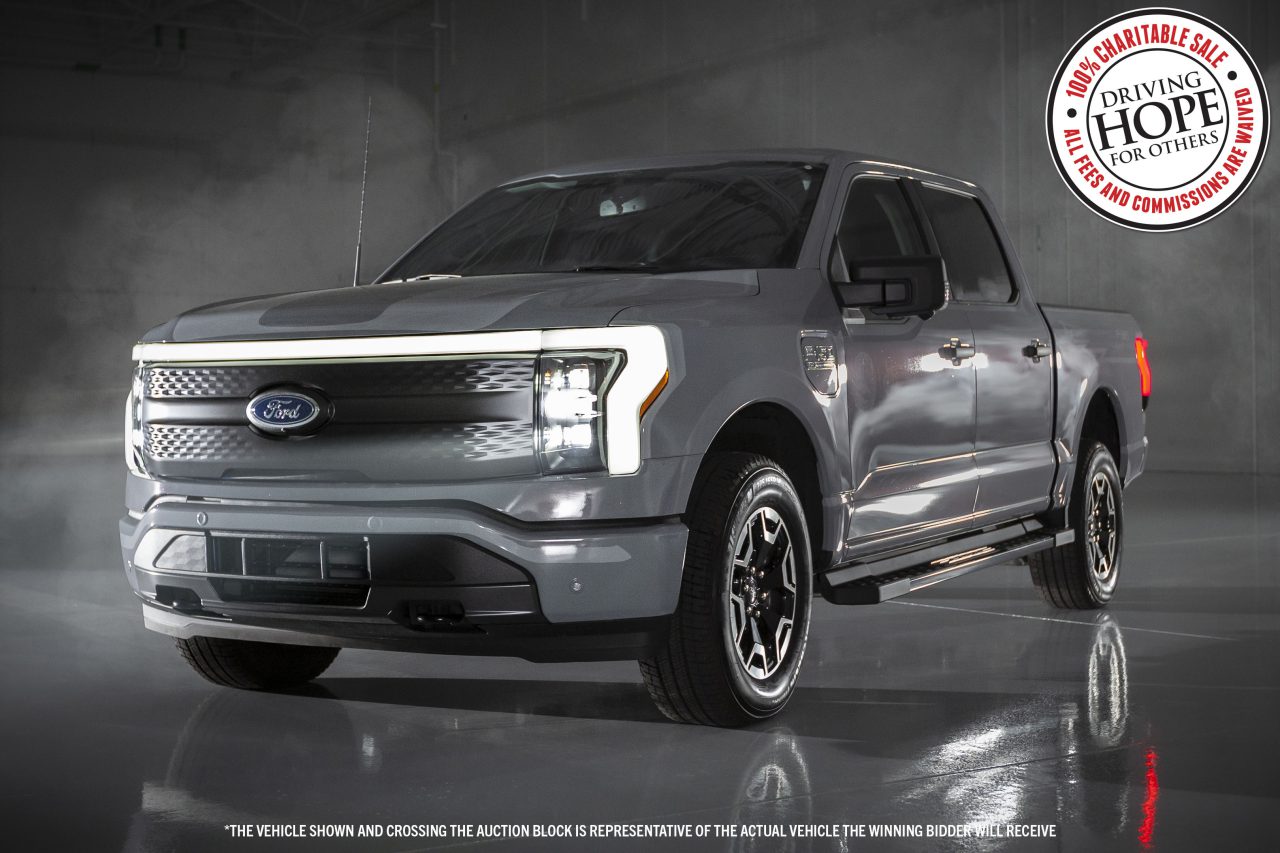
A 2023 Ford F150 Lightning 4×4 Super Crew Pickup (Lot #3001) will be sold Friday, January 27, with 100 percent of the proceeds benefiting Fighter County Foundation to support the men, women and families of Luke Air Force Base in Arizona by enhancing the morale, well-being, culture, tradition and sustainability of the base. Recently named the 2023 North American Truck of the Year, this electric pickup is equipped with the Platinum Lightning Series Package, features a 145-inch wheelbase and is powered by a 300-mile dual emotor-extended-range battery with single-speed transmission. The exterior of this vehicle is finished in Iconic Silver Metallic, while the interior is black with black leather and was inspired by the fighter jet F-35 Lightning.
The 2021 Shelby Super Snake Count Kustoms Edition (Lot #3000) will cross the block on Friday to benefit Camp Freedom, a nonprofit that serves veterans, first responders, their family members and Gold Star families by providing peer-to-per interaction and camaraderie combine with an outdoor adventure to bring life-saving healing to these true American heroes. Customized by Count’s Kustoms, this vehicle is powered by a 5.0-liter Coyote V8 engine equipped with a supercharger and a special tune to deliver over 800hp and is mated to a 6-speed manual transmission.
Those interested in registering to bid on these five charity vehicles as well as the entire 2023 Scottsdale Auction docket may do so here.
Advance ticket pricing and VIP packages are available here. Barrett-Jackson also provides discounted tickets for children, students, seniors, military and first responders.
Join Barrett-Jackson’s online conversation with #BarrettJackson and #BJAC on Facebook, Twitter, Instagram and YouTube.
“The Grand Tour,” Amazon Prime’s car show presented by former “Top Gear” hosts Jeremy Clarkson, Richard Hammond, and James May, may be coming to an end soon.
Citing anonymous sources, Variety reported on Monday that Amazon’s streaming service will cease working with Clarkson beyond what the two parties have already agreed upon.
Clarkson also appears in the separate Amazon Prime show “Clarkson’s Farm.”
Filming of new episodes for both shows is currently underway, but according to Variety there likely won’t any new episodes of either show beyond 2024, apart from a possible final episode for “The Grand Tour” that may carry over into 2025. That last episode is one of four final episodes for the show, according to Variety.
The report comes after Clarkson made scathing comments about Prince Harry and Meghan Markle, Duke and Duchess of Sussex, in a Dec. 16 article for The Sun, which the newspaper has removed.
In the article, whose title was “One day, Harold the glove puppet will tell the truth about A Woman Talking B*****ks,” Clarkson described Harry as being fully controlled by Markle, and also expressed how much he hated Markle.
He also referenced a scene from “Game of Thrones” in which Lena Headey’s character, Cersei, had to parade naked while townspeople threw their trash at her. In the article, Clarkson said he dreamed of the same one day happening to Markle.
Amazon Prime hasn’t commented on the controversy, but Clarkson in one of several public apologies said the streaming service was “incandescent” about his treatment of the Duke and Duchess, Variety reported.
“The Grand Tour” first appeared on Amazon Prime in 2016 but went on hiatus after 2021 due to difficulties in filming new episodes caused by pandemic-related travel restrictions. Amazon Prime originally snagged Clarkson for the show, together with Hammond and May, after Clarkson was fired by the BBC, the producer of “Top Gear,” due to his 2015 attack on a fellow staff member.
This article was originally published by Motor Authority, an editorial partner of ClassicCars.com.
Date: July 1964
Location: Seattle, Washington
Source: William L. Dahl, via Washington State Archives
What do you see here?